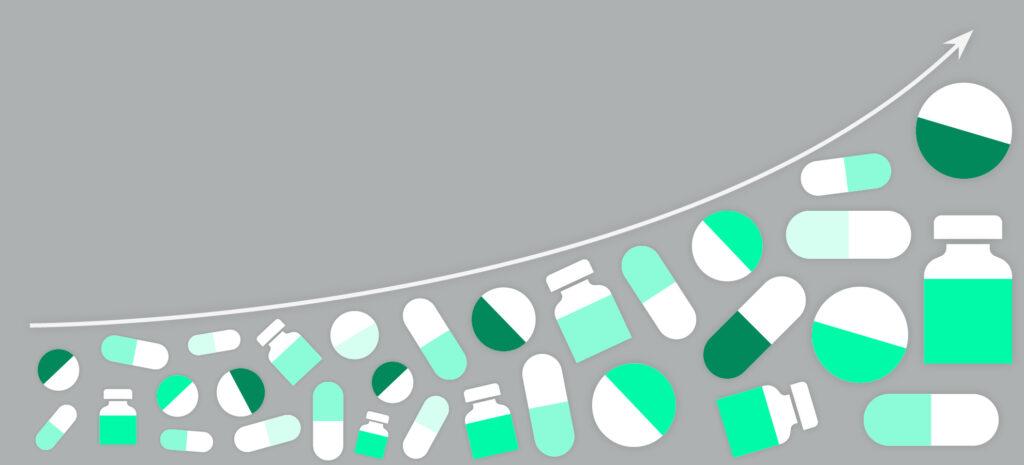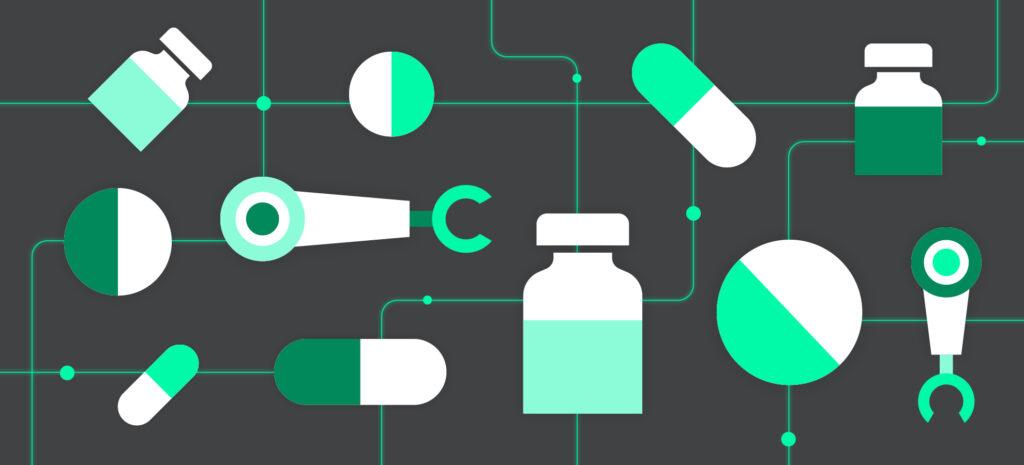You can listen to this post instead.
A recent McKinsey report says that while the life science industry has gained important ground in being able “to better predict, prevent, treat, and cure a wide range of diseases…many companies are grappling with falling or stagnant productivity.” With the exception of the fast-growing biotech sector, other pharma segments – including big and midcap pharma – face declining productivity amid rising research and development costs.
How are pharmaceutical companies responding to this productivity challenge? According to McKinsey, most of the world’s top 30 drug makers have announced major transformations, including restructuring operations, to achieve long-lasting gains in productivity. But successful transformations that yield significant gains are “notoriously hard to pull off.” Amid corporate restructurings, merger and acquisition activity, and other operational changes, life science companies also look to technology to uncover potential productivity gains.
Technology as a driver for change
Digital transformation is both a legitimate trend and a tired cliché – for every thought leadership article espousing the benefits of transformational tech, a naysayer is claiming it’s all talk, no results. (One pundit goes so far as to say that boasting about going digital is akin to “being proud that the office has light bulbs instead of candles.”) However, companies still see value in digitizing operations across finance, human resources, collaboration, and other business units.
The pandemic accelerated digital transformation by as much as five years for the life science industry, according to more than a third of respondents to one research survey. Still, the industry is notoriously conservative, and gains may have been incremental:
Theirs is a world of multiyear R&D cycles, stringent regulatory and quality standards, and risk-consciousness. The upshot is a preference for incremental performance improvements that will likely stymie a transformation that by its very nature has to be bold. – McKinsey
But what if the technology in question was not only accommodating of concerns like regulatory requirements and risk reduction, but actually designed to be compliant and secure?
Transformation, tailored to life science
Using technology to increase productivity can backfire – at best, people might be resistant to using new tools and processes. At worst, new tech can open organizations to fraud or other negative consequences. But applying systems that support and enhance work that’s already being done, and allowing that work to be more meaningful, can be a big win.
Insight-gathering – the process of soliciting, compiling, and analyzing feedback from several audiences to create a scientific narrative – is the backbone of drug and device development. From clinical research and development through product commercialization and post-market monitoring, insights and impressions from researchers, doctors, payers, patients, and other stakeholders are collected, parsed, and examined for directional information that will lead to good decisions, successful product launches, and positive outcomes for patients.
Traditionally, this process takes place across multiple internal teams, many audiences, and even different geographies or business units. Information is stored in systems that aren’t connected, and the habit of relying on the same key influencers as the competition means that nobody gets truly novel or differentiated information. This frustrating and lengthy process is certainly among the biggest contributors to productivity loss.
Insights management technology combines several of these insight-gathering systems – many long relied upon by the life science industry – into a single platform, making them more powerful and effective than disparate systems working on their own. And because the technology doesn’t require disruptive integrations or highly specialized training to be effective, companies are likely to see the impact of an insights management platform within a shorter time than large-scale restructuring efforts, M&A activity, or a tech stack overhaul.
The need to improve productivity in pharma is an urgent directive because of the benefits to patients worldwide. For life science teams, insights management technology is a compelling option to advance both business and health objectives.
Short on time? Learn the five signs your organization already needs insights management technology.







